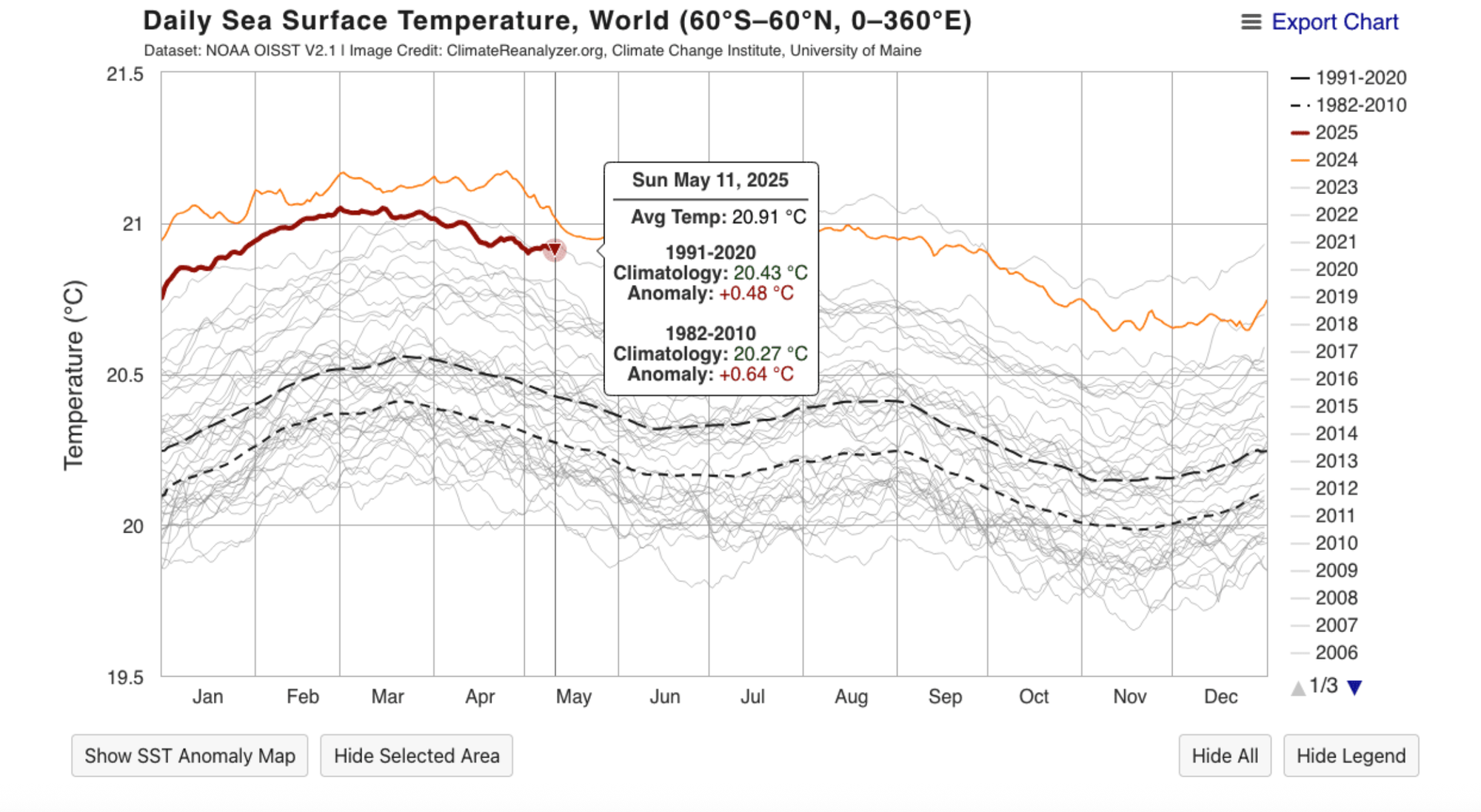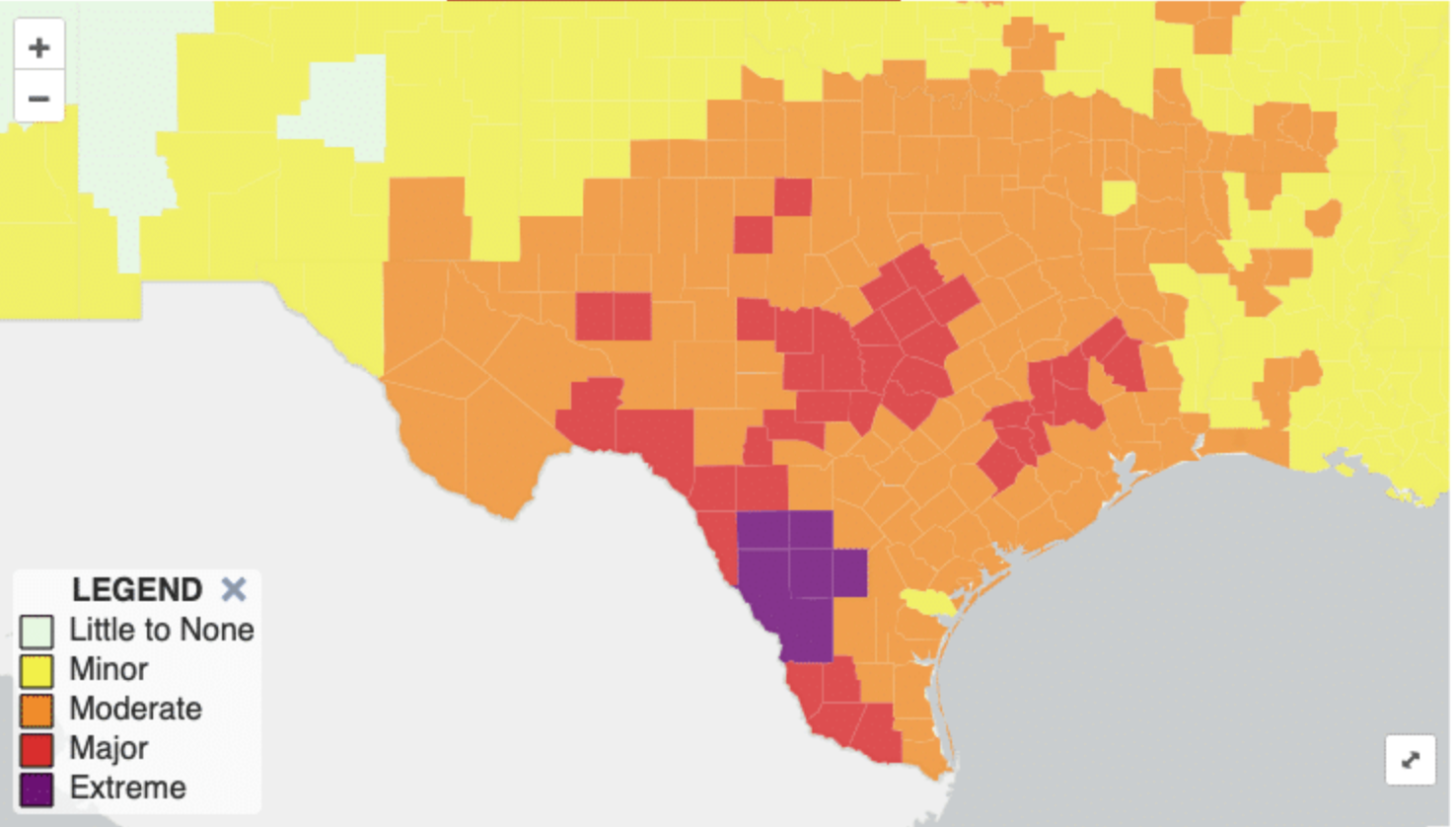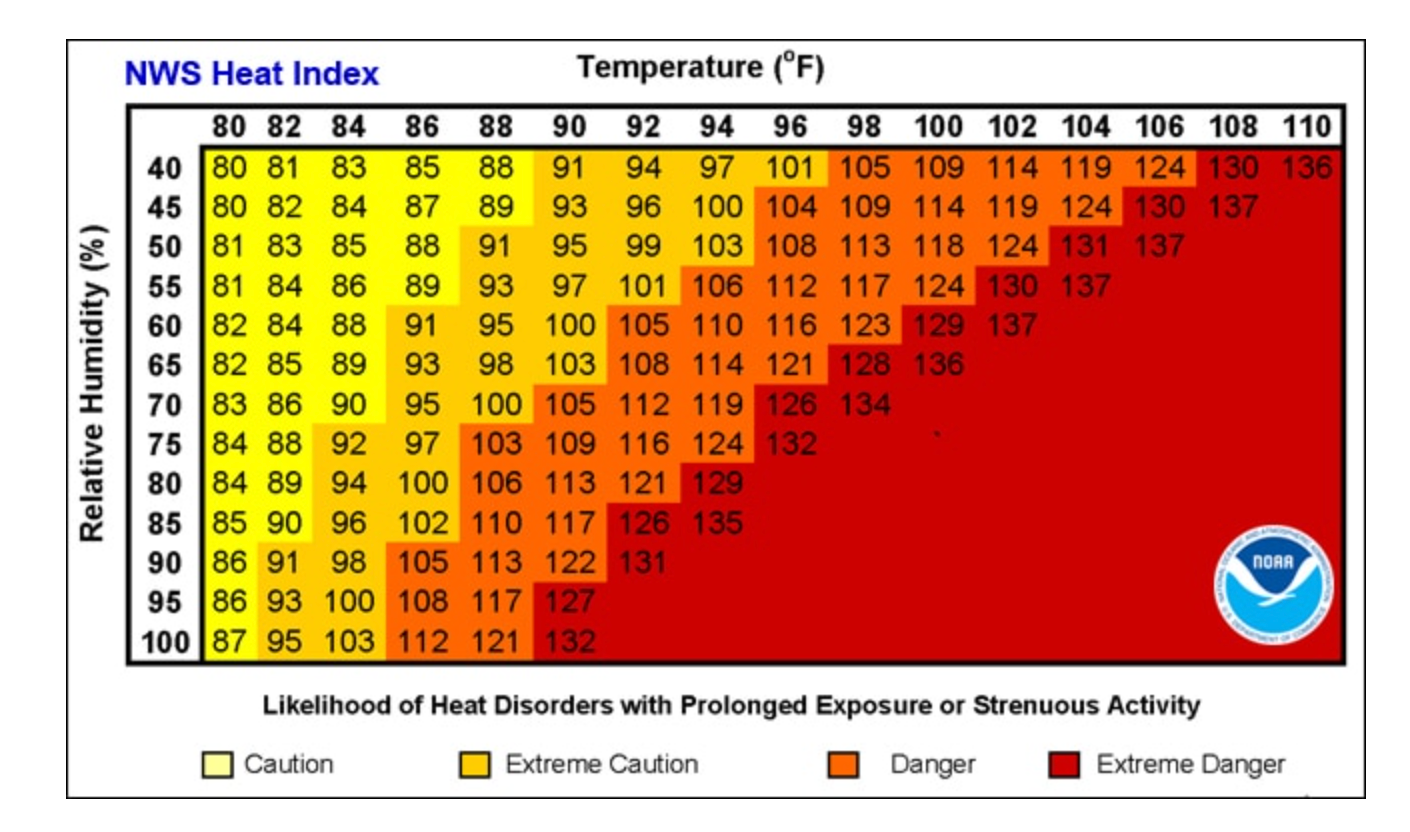Extreme Heat Roars Into Texas Early: A Reminder Of The Climate Crisis
Sudden heat shock expected to stress bodies across the state this week as 2025 continues to manifest unprecedented levels of extreme heat for Texas and the planet

This article was originally published by Deceleration
“One of the more dramatic temperature swings in recent memory is expected to take place between Monday and Tuesday,” so writes the National Weather Service in a recent area forecast. While our much cooler April was already five degrees above normal for San Antonio, today will deliver “one of the hottest May heat waves of all time.”
Triple digits, and many historic records, will be broken throughout the state over the coming week. As the NWS advisory reminds: “Drink plenty of fluids, wear light weight and light colored clothing, take frequent rest breaks in shaded or air conditioned environments, and check up on relatives and neighbors.”
Most of Texas will be under a heat advisory today, while “excessive heat warnings” will also begin to pop up across the state. It is, as meteorologist Shel Winkley of Climate Central tells Deceleration, a “full-on run to summer.” And without time for our bodies to adjust to a seasonal shift, it is bringing particular public health challenges.
At bottom, the heat is a product of natural weather patterns you can read about easily on many area weather-related sites. But largely neglected by these meteorologists and weather reporters is the “big layer on top,” which is the contribution from global warming, says Winkley, who was the chief meteorologist at KBTX in Bryan-College Station for 15 years before joining Climate Central last year. Climate Central bills itself as a “policy-neutral” nonprofit organization dedicated to communicating the science of climate change to the public.
“We’re in, you know, a different ENSO phase, but that’s kind of a bottom layer,” said Winkley. “If you think about [attribution] as a cake, climate change is that big layer on top, and then you have little things like urban heat island that’s like the frosting. We know that these temperatures for much of the state are anywhere from three to five times more likely [due to climate change], which means that there’s a strong fingerprint of climate change.
“For cities like Austin, San Antonio, down to Corpus Christi these temperatures would have been almost impossible without a fingerprint of climate change included. And that’s caused by us burning coal and oil and methane gas,” Winkley said.
After 2024’s hottest year ever recorded—and possibly in 120,000 years or more—is 2025 taking us deeper into unprecedented heat?
Consider the trends of land and sea and it’s clear that it’s going to be a close call.

“Forecasters and meteorologists and climate scientists know that 2025 likely is going to rank among one of the top hottest years that we have experienced as human beings and that the planet Earth has experienced as well,” said Winkley.
“We know through attribution science that we as humans have altered those temperatures, made them warmer than average, or the likelihood of them to be warmer than average because of climate change. Oceans are important because they are the way that nature stays in balance, and that balance has shifted. And that has real life impacts,” he continued. “We have the attribution science that shows us the correlation between an above average sea surface temperature that boosts the intensity of a hurricane, to things like especially for Texas, nighttime temperatures.”
For generations, Texans have been able to cool their bodies down at night and survive without air conditioning. But those days are starting to slip away as evening temps warm faster across the state than day temperatures.
The only area counties not included in the Heat Advisory on Tuesday are DeWitt, Fayette, Lavaca and Lee Counties, but each are included for Wednesday.

In the above NWS graphic, orange represents “Moderate” heat impact, hazardous to “individuals sensitive to heat, especially those without effective cooling and /or adequate hydration.” As Deceleration has written previously, those on certain medications, including some bipolar meds, are also at heightened risk.
Red is considered “Major” heat risk, which begin to strain “heat-sensitive industries and infrastructure.”
Magenta is defined as “Extreme” and impacting “anyone without effective cooling and/or adequate hydration.”
An important element here is the fact of our changing heat. San Antonio has seen 2.7 degrees (F) of additional warming on average since 1970 due to the industrial use of fossil fuels, Climate Central reports. And it has seen 33 more days annually above 99 degrees since 1970. Houston, Texas, meanwhile, has seen 3.6 degrees of additional warming during the same period. El Paso has logged 6.9 additional degrees of warming.
When extreme heat is discussed in Texas, some are tempted to scoff. After all, hasn’t it always been hot in Texas? Not nearly this hot. This is weather our parents and grandparents did not know.
“What I think is most interesting about this heat event outside of the fact that this could break so many records, and not just daily records, but monthly records and state records, is how long it’s going to persist. This isn’t just a blip in our spring weather. This is a full-on run to summer,” Winkley said.
This is increasingly deadly weather in a state already known for climate extremes. And the deaths it manifests, as Deceleration writes regularly, are largely invisible due to poor heat surveillance. However, efforts are underway within the City of San Antonio, and increasingly Bexar County, to fix a history of inadequate heat tracking.
A Council Consideration Request filed on April 21, 2025, by Councilmembers Jalen McKee-Rodriguez (D2) and Teri Castillo (D5), titled “Tracking and Preventing Heat Deaths” calls on city leaders to improve heat surveillance and coordinate with Bexar County. If approved, it would direct the San Antonio Metropolitan Health District to “explore best practices of tracking heat-related deaths in the City of San Antonio through an intergovernmental collaborative effort with the Bexar County Medical Examiner’s Office, City and County public safety departments, and local hospitals.”
It’s unclear if departing Mayor Ron Nirenberg is committed to advancing that effort in his final days or will leave it for the incoming mayor. A response from Nirenberg’s office was not provided before our publication deadline today. If Nirenberg leaves it for his successor—either Gina Ortiz-Jones or Rolando Pablos, headed to a runoff election on June 7, will have the opportunity to give the effort a hearing—or not. Ortiz-Jones spoke favorably of the effort at a recent town hall on environmental topics.
Related conversations have been taking place with some Bexar County Commissioners with some private assurances of support, too, though one commissioner contacted by Deceleration this morning said it would be premature to make any announcements just yet.
The sudden onset of extreme temps will be exacerbated by high humidity, which together compound health risks. To round out the overall hard shift in weather is the fact of high ozone levels, or smog, caused in part by those high temps cooking the emissions of area industry.

Considering temps advertised by the National Weather Service are typically recorded outside of the city core, in San Antonio’s case at the San Antonio International Airport, actual lived heat may be as much as 10 degrees or more than what is reported. This is due to the absorption and amplification of that heat by so much asphalt and paved surfaces across the highly developed city core.
We urge readers to consult emergency guides prepared by their local emergency responders and official channels for updates—but also to supplement what they find there with Deceleration’s bilingual Extreme Heat Survival Guide.
Deceleration is a nonprofit online journal of environmental justice. Sign up for their Deceleration In Depth newsletter.



Comments ()